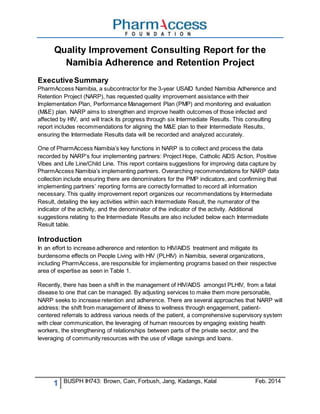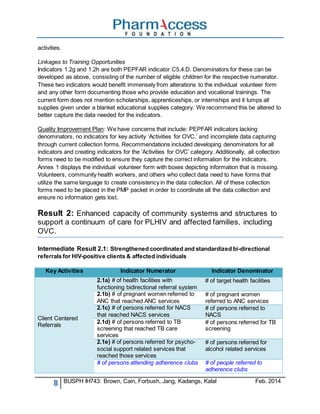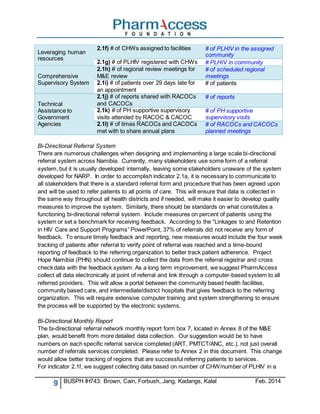The document provides a quality improvement consulting report for the Namibia Adherence and Retention Project (NARP) which aims to strengthen health outcomes for those infected and affected by HIV. It includes recommendations for aligning NARP's monitoring and evaluation plan to its six Intermediate Results to ensure accurate data collection and analysis. It also contains suggestions for improving data capture by NARP's four implementing partners. The report organizes recommendations by Intermediate Result, detailing indicators and suggested improvements to data collection methods.














